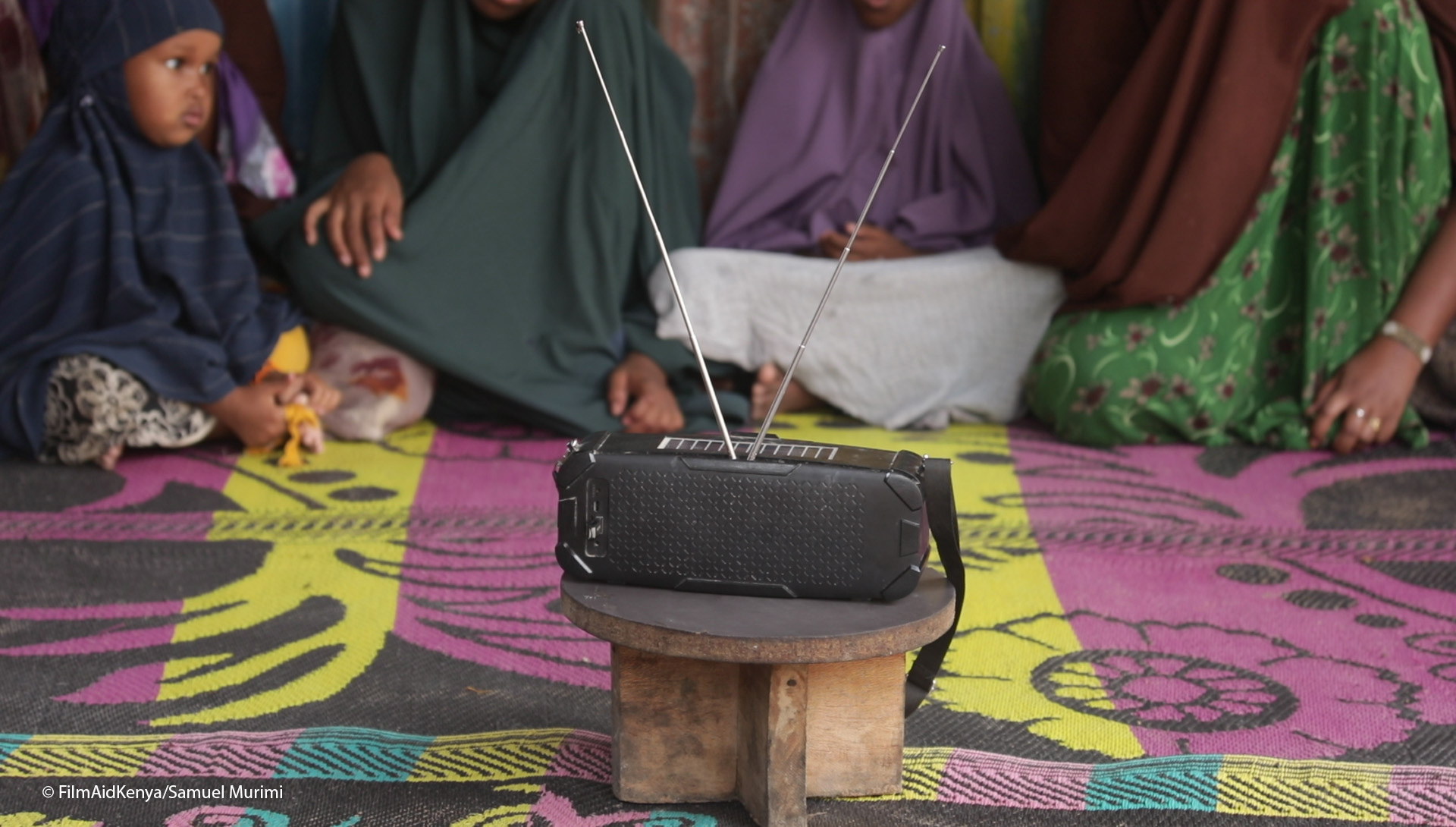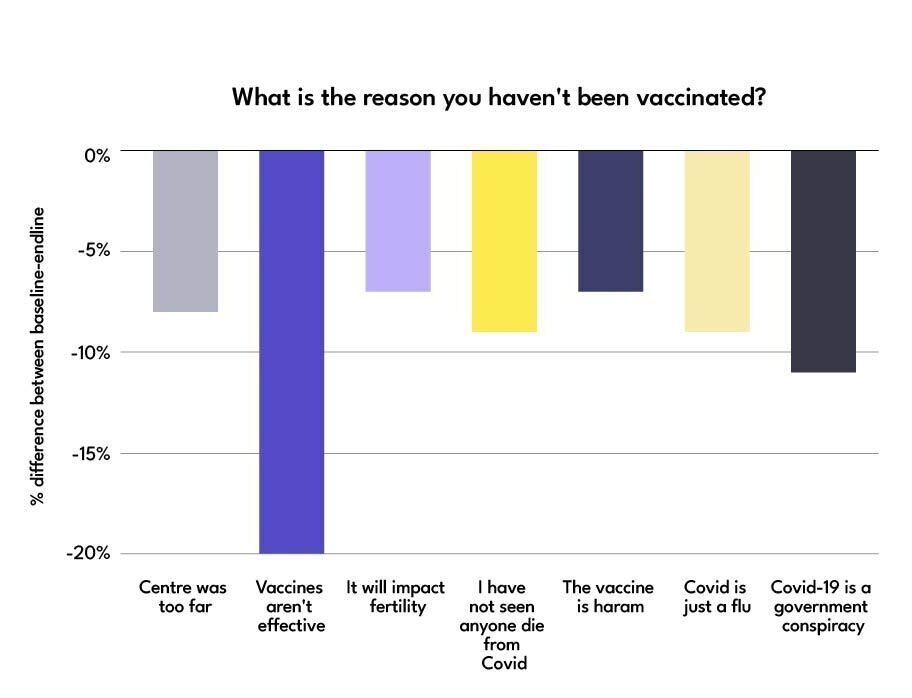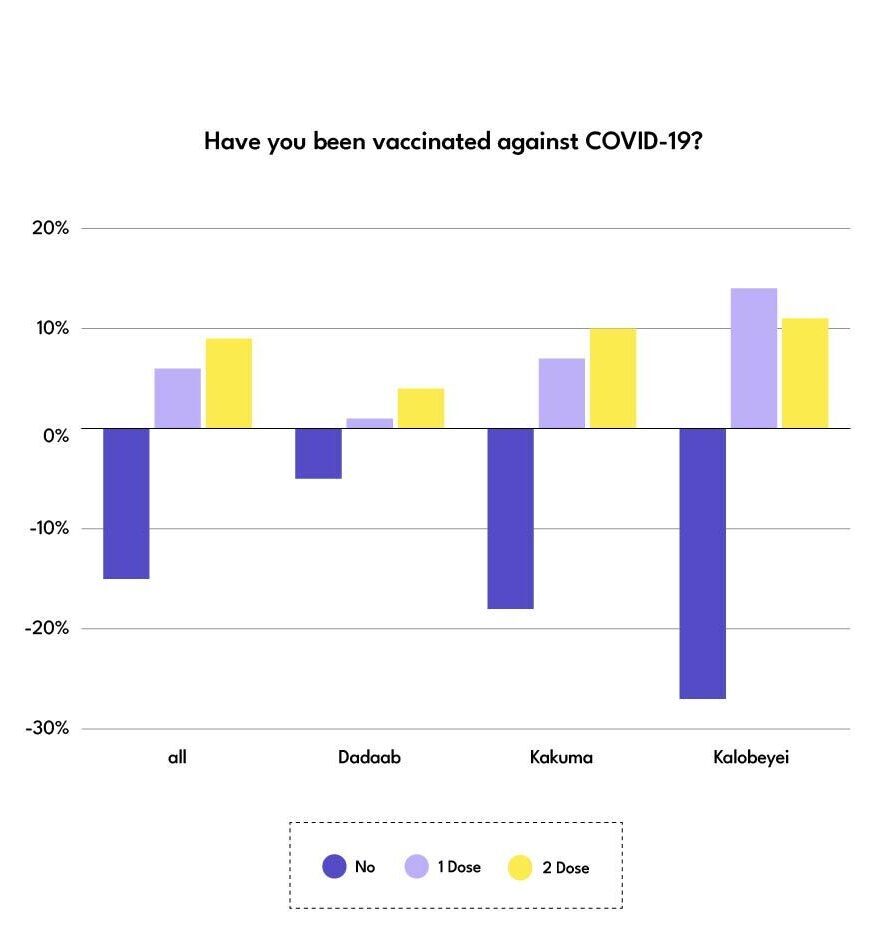Debunking Vaccine Myths in Kenya’s Refugee Communities
Tackling vaccine myths in refugee camps
George Mwangala
In 2022, while the impact of COVID-19 started to recede across most of Kenya, its effects still lingered in the refugee camps established in Dadaab, Kakuma, and Kalobeyei, which are among the largest in the world hosting around half a million people. Communities in the camps are largely self-contained, and they face particular challenges that play out very differently compared to the rest of Kenya, in particular around access, healthcare, education, and food insecurity. While thousands of cases of COVID-19 were recorded in the camps, for the refugees and host communities, getting vaccinated was not a priority or feared. Other healthcare issues such as cholera, malaria, and measles, took precedence. Alongside this, a storm of misinformation about the COVID-19 vaccination was spreading, increasing hesitancy and stigma. A new communications approach was needed to debunk vaccine myths and help communities in the camps better understand the vaccine and how to access it.
Purpose and the UN, alongside Kenya’s Ministry of Health, FilmAid Kenya among other health partners deployed a campaign aimed at driving COVID-19 vaccine uptake among refugees and host communities.
Countering misinformation head on

Our research told us a lot about the misinformation that was spreading in the camps around the COVID-19 vaccine. Some of the most pervasive myths included that it impacted fertility, that it was haram (Forbidden by Islamic law) or it just wasn’t effective. After speaking to partners with a deep understanding of the communities, we determined that the most effective approach to persuading them to get vaccinated was to openly acknowledge the myths and misconceptions spreading throughout the camps and craft fact-based narratives to counter them. These messages were tailored to the different communities living in the camps and translated into nine of the most spoken languages. We knew that combating misinformation head-on is a tactic that needs to be carefully deployed, given that under the wrong conditions, it can unintentionally lead to the further spread of misinformation. But in these communities, the most damaging myths were already well-known.
When misinformation has taken hold within a community, countering it head-on is not only effective, but necessary in order to shift ingrained attitudes and behaviors.

The campaign led to a decrease in reports across every COVID-19 vaccine myth we analyzed, including a 20% decrease in people saying they do not believe the vaccine is effective.
Reaching communities through trusted messengers
We knew that the campaign would only be effective if it was delivered by people who were known and trusted within the camps. We engaged community leaders, camp block leaders, and religious leaders as key messengers. They had been identified as preferred sources of information and were crucial to reaching the refugees and host communities in an authentic and meaningful way. A key insight that informed the campaign was that face-to-face conversations and word of mouth are the most trusted ways information is shared in the camps. Equipping community leaders with the right messaging meant that they could reach communities directly and speak to them using simple, clear, and colloquial language.
Trust is essential. To really shift attitudes and behaviors we need to support resonant voices in using proven culturally appropriate channels and messages that speak to their audiences’ priorities.

The campaign increased the likelihood of audiences addressing false information: 21% uplift in respondents reporting that they believe the actions of people like them can reduce the spread of wrong information about COVID-19.
Meeting people where they are
People respond differently to a message depending on where they see or hear it, and their perceptions of the channels through which they encounter information shape the resonance a message has. We learned that in the camps the preferred channels were WhatsApp, talking to someone face-to-face, or listening to the community radio. In addition to prioritizing these channels, we also used mobile caravans, which are vehicles that have public address systems mounted on them. Key messages were provided to the outreach staff in written format which they used to disseminate in their native languages as the caravans moved around the camp. These are known to be effective in reaching large groups of people within the camps.
Understand where your target audience is active to tap into their existing habits to ensure that your message lands effectively.

The campaign resulted in a 15% increase in people receiving COVID-19 first or second-dose jabs.
More about Verified
In the midst of uncertainty, fear, and anxiety surrounding the COVID-19 pandemic, misinformation found fertile ground to spread at an unprecedented speed. This was hindering the ability of people around the world to make informed decisions that would keep themselves and their communities safe.
Verified, an initiative from Purpose and the United Nations, was launched to reach communities worldwide with lifesaving information. Over one billion people were reached with dynamic, rapid response fact-based content, which dispelled pressing myths around the virus and helped improve COVID-19 vaccine acceptance and uptake. For more information, visit shareverified.com.